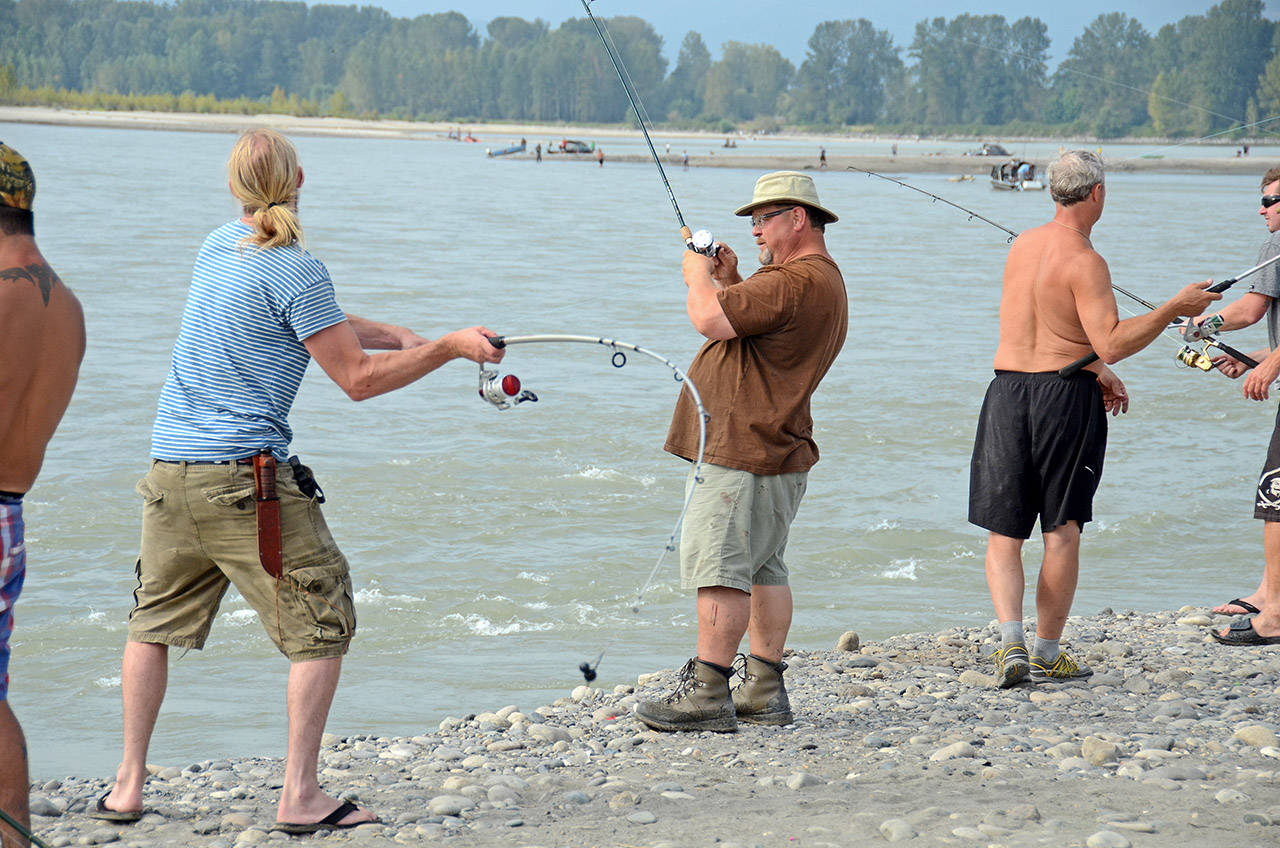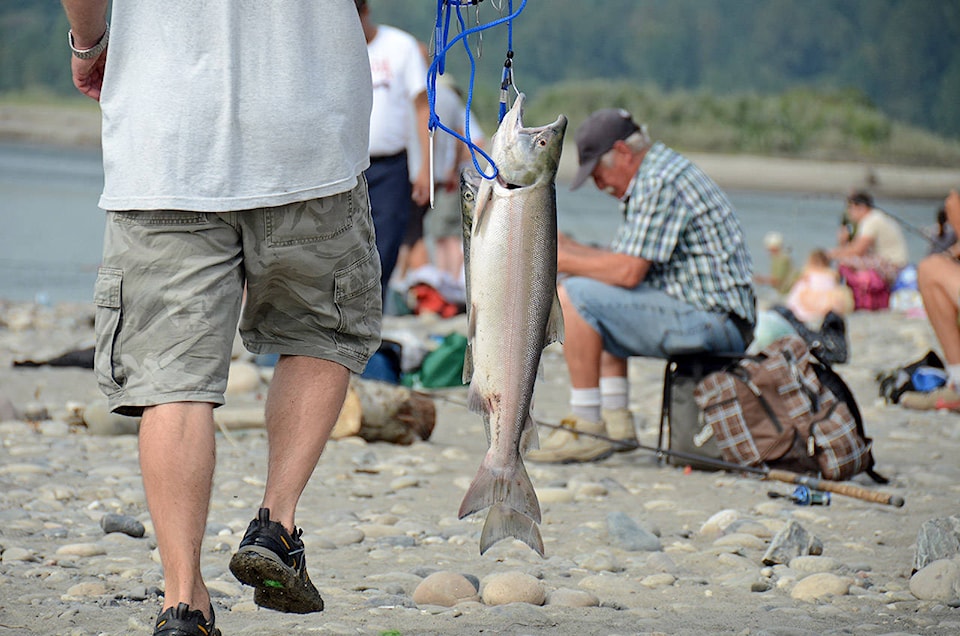Anticipation is growing for the super sockeye salmon run now returning to the Fraser River.
Anglers found out Friday that a recreational fishery opening was set for Tuesday, said Dean Werk, president of the Fraser Valley Salmon Society, and owner of Great River Fishing Adventures.
He’d been predicting it would open after the long weekend, and the recreational fishery will run Aug. 7 to Sept. 3 with retention limit of two sockeye per day and four chinook.
“It’s been four years since the last super run of sockeye,” Werk said.
The estimated return for Fraser sockeye in 2018 is for somewhere between seven million and 13 million sockeye salmon, depending on the impact of warming ocean and in-river conditions that can lead to pre-spawn mortality.
“It means everyone is going to have the opportunity to catch fish,” Werk said.
READ MORE: Protest averted as Chinook fishery opens
With the Early Stuarts having gone through the system at this point, that run of concern looks good, too.
There were reports recently that the early run had reached the spawning beds and met escapement targets. So that’s usually when DFO decides to open the river to the recreational sector, during the dominant cycle runs like those seen in 2018, 2014, and 2010, he said.
“A short food fishery is great for the economy, and people get some fish to eat,” said Werk. “It allows recreating on the river and spending time with family and friends.”
It’s better than allowing too many fish to reach the spawning grounds, which can backfire on spawning targets as eggs get buried.
“People have to understand for the recreational sector, it’s a food fishery for us too. I think it’s a valuable way to look at it in terms of our Canadian heritage,” Werk added.
Federal DFO officials stagger fishery openings on the Fraser using the protocol of conservation as the highest priority, followed by First Nations fisheries, and then commercial and recreational fishing.
Sto:lo fishers have been out fishing for food, social, and ceremonial (FSC) purposes, and there was a huge opening last weekend.
They anticipate at least one more weekend of FSC openings, said Ken Malloway, a Sto:lo fisherman. Malloway is also chair of the Lower Fraser Fisheries Alliance, and a member of the Fraser River Panel of the Pacific Salmon Commission.
“It looks pretty promising,” Malloway said about the sockeye numbers swimming up the Fraser so far. Test fisheries and scientific modelling gives them the in-river run estimates.
They were expecting about 84,000 sockeye in the Early Stuart run timing group, which is the run that heads upriver first.
“But they came in at 135,000, so that is a very good return,” Malloway commented.
There are no FSC openings during the Early Stuart for conservation as DFO is trying to rebuild it.
READ MORE: No opening last year
DFO managers decide how many of each of the run timing groups can be harvested by Sto:lo fishers, and they’ll close down the river for conservation concerns, like the presence of coho or steelhead in the river.
“The Early Stuart return was bigger than we thought this year,” Malloway said. “They keep us out of the water pretty much when they’re in the river.”
The Early Summer and Summer runs look strong, too, he said.
In the meantime, Malloway looks forward to finding out whether they’re heading out on the water again this weekend for one last kick at the can.
“They’ll be gone pretty soon,” he noted.
Overall the healthy sockeye run of 2018 bodes well for Sto:lo communities and families who depend on the prized fish.
“It’s pretty good because last year we didn’t have a sockeye fishery at all,” Malloway said.
@CHWKjourno
jfeinberg@theprogress.com
Like us on Facebook and follow us on Twitter.

